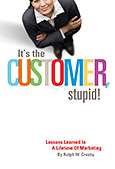Emotional Content’s Viral Impact
The online, viral explosion following renewed accusations of sexual misconduct by entertainer Bill Cosby has again proven the impact of emotional content. As the Washington Post noted in a recent Cosby article:
“Studies of viralness have shown that content is more likely to be shared if it evokes extreme emotions – even if they are such ‘negative’ emotions as anger or disgust.”
The Post experienced this “viralness” when one of Cosby’s alleged victims posted an emotional, first-person article on the Post’s website, and it produced more than two million page views.
Years ago, as a newspaperman, I noticed how an emotional story would not only spur readership, but would move readers to action. I’ve read or written articles that played on readers’ feelings and moved them to join a cause or make a donation.
I found that such content could be related to the ancient maxim that people are motivated by both positive and negative emotions – such as love and kindness, fear and greed.
My intuitive discovery has been backed by behavioral research. Behavioral scientists studying the brain have debunked the idea that decisions are made mostly through logical, linear thinking. They discovered that emotions are critical in retaining and retrieving messages. In a landmark study by the American Association of Advertising Agencies (AAAA) and Advertising Research Foundation (ARF), this finding was applied to marketing. The study determined that advertising messages that successfully generate a strong emotional reaction create better recall, persuasion, and liking than those that don’t.
The traditional thought about how people responded to advertising messages was “Think, Feel, Act.” But the AAAA/ARF researchers found that when viewing an ad, consumers follow a different path to a purchase decision – “First FEEL, Then Think, Then Act.”
This idea makes sense when you consider that consumers are emotional beings with imaginations who create a loyal relationship in their minds with certain brands. As the AAAA/ARF study concluded, “As marketers, creative, planners and researchers gain a clearer understanding of how story line, metaphor and emotion drive idea engagement, we are going to see a rise in the number of powerful, lasting advertising ideas which create brand demand and a lessening on any single platform. They will generate effectiveness by engagement, rather than by repetition or tonnage.”
In other words, while increased media spending and more media outlets help get the message out, it may not be effective if the message doesn’t connect emotionally with the audience.
And in today’s world of viral online connectivity, there’s a lot larger audience to engage.

 Businesses often are started by entrepreneurs with an idea, a product or service, or an expertise. Many of them fail, not because the idea or product isn’t good, but because their attention is overwhelmingly directed internally – e.g., what goes into the product – when they should focus externally, always reminding themselves:
Businesses often are started by entrepreneurs with an idea, a product or service, or an expertise. Many of them fail, not because the idea or product isn’t good, but because their attention is overwhelmingly directed internally – e.g., what goes into the product – when they should focus externally, always reminding themselves:
